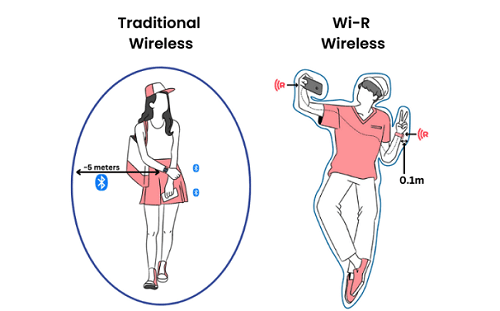YR11 is the first IC to employ Wireless Resonant Energy Link (Wi-R) protocol.
Wi-R utilizes the human body as a conductor and confines the signal around the user’s body.

The Ixana YR11 chip is equipped with a new Wi-R protocol that consumes up to 100X lower energy than Bluetooth or existing Wi-Fi solutions. The solution employs a non-radiative wireless signal that has a range of 2-5 meters in a conductor while less than 10 cm around the conductor.
This technology utilizes a human body as a conductor and confines the signal around the user’s body. It can allow engineers to design devices that provide robustness, efficiency and touch selectivity of the signal. Moreover, it enhances the safety of the system by having a short transmission range from the body and also featuring mathematical security that comes from encryption.
Wi-R (Wireless Resonant Energy Link) is a new technology for wireless communication that uses Electro-Quasistatic (EQS) Fields to transfer data between devices without the need for a physical connection or radio waves. It is considered a form of near-field communication and is designed to offer advantages such as low power consumption, high data transfer rates, and improved security. The technology is still in the development phase, and more research and testing is needed to fully understand its capabilities and limitations.
“Compared to Bluetooth, Wi-R offers 100X better energy efficiency,” said Shreyas Sen, CTO, Ixana. “Additionally, Wi-R boasts faster data rates, lower latency, and higher reliability with its interference robustness and low bit error rates. Wi-R is confined near the surface which leads to unique advantages in physical security, multi-node co-existence, touch detection, and communication”.
The YR11 IC can enable designers to integrate Wi-R technology into upcoming devices. It can enable secure communication with just a single touch. The YR11 can be embedded in to compact wearable which can enable the user to track and communicate with the device. YR11 can introduce transformative capabilities with high-speed data and distributed computing, leading to accelerated adoption of this technology.






